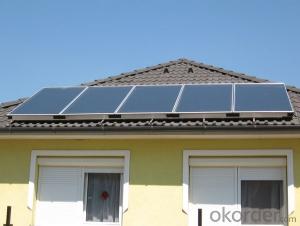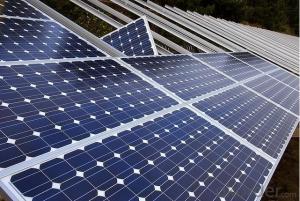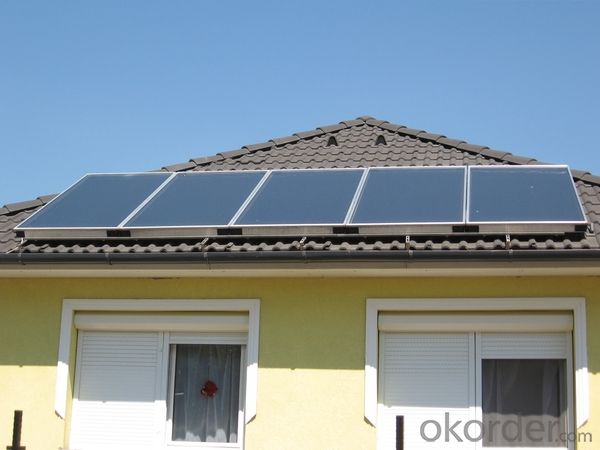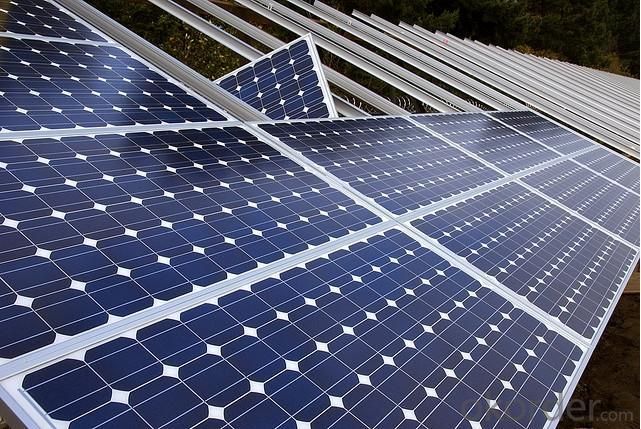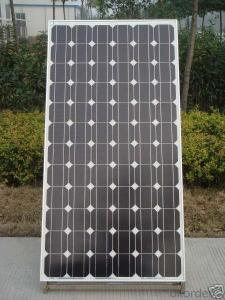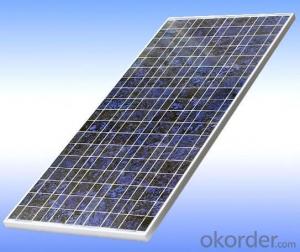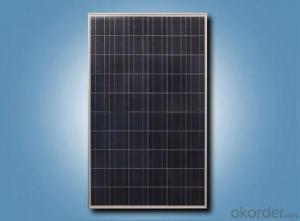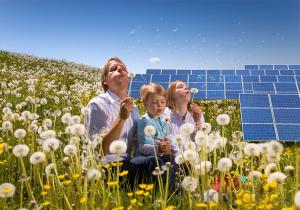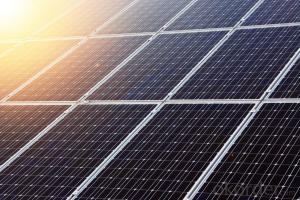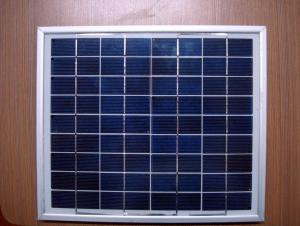High Efficiency 310W Poly Solar Module - Solar Panels Jacksonville FL
- Loading Port:
- Tianjin
- Payment Terms:
- TT OR LC
- Min Order Qty:
- 1 watt
- Supply Capability:
- 100000 watt/month
OKorder Service Pledge
OKorder Financial Service
You Might Also Like
Specification
Product Description:
1.Structure of Solar Module Description
CNBM Solar's photovoltaic module is designed for designed for large electrical power requirement. It is the optimal choice for both on-grid and off-grid power systems. CNBM Solar offers high performance of power per square foot of solar array.
2.Main Features of the Solar Module
Solar Cell: High efficency crystalline solar cell. Even if under the weak light, the solar module can produce maximum power output.
Tempered glass: Anti-reflecting coating and high transmission rate glass increase the power output and mechanical strength of solar module.
EVA and TPT: Using high quality EVA and TPT to prevent destroying and water.
Strong aluminum frames to strengthen the load hold and to stand against high wind.
Junction box: Multi function junction box with water proof.
Long lifetime: ≥25 years; Less power decrease.
Good performance of preventing from atrocious weather such as wind and hails.
Resisting moisture and etching effectively, not effected by geology.
The certificate issued by international authority: UL, TUV, IEC, VDE, CE.
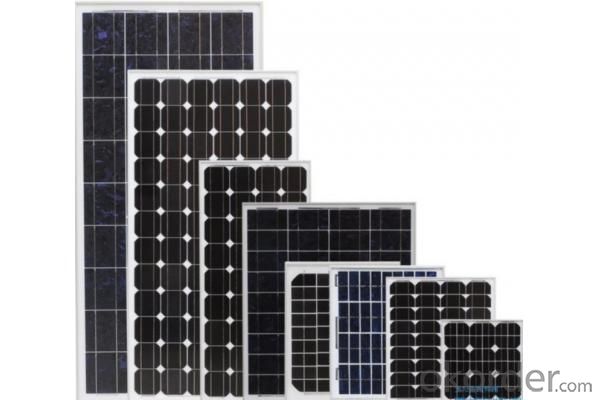
Solar panel working process
In addition to being the ultimate source of all life on earth, the sun is an infinitely renewable, completely pollution-free source of electricity. Instead of burning fossil fuels dug up from the ground in a big power plant – a very 19th century, industrial age approach, when you think about it – solar panels convert sunlight directly into electricity, with no harmful emissions.
The basic unit of a solar panel is a solar cell, which usually consists of one or two layers of silicon-based semiconductor wafers. When struck by the photons in sunlight, the solar cell generates an electrical charge due to the "photovoltaic effect" – which is a pretty good name, since it produces voltage from photons. The flow of these electrons moves in a steady electrical current from one side of the cell to the other.
Dozens of these PV cells are packaged together into solar modules, which in turn are packaged into solar panels that are mounted on a rooftop and arranged to maximize their hours of exposure to direct sunlight. Because the electricity generated by all those solar cells is direct current (DC), it is then sent to an inverter that transforms the power into the same alternating current (AC) used by the appliances in your home and the local utility electricity distribution grid. Increasingly, these inverters are getting "smart," providing data monitoring for solar installation performance and other grid integration services.
- Q: What is the impact of roof color on solar panels' performance?
- The impact of roof color on solar panels' performance is minimal. While a lighter-colored roof may reflect more sunlight onto the panels and potentially increase their efficiency, the difference is generally negligible. The key factors that affect solar panel performance are the angle, orientation, shading, and cleanliness of the panels, as well as the overall quality and technology of the panels themselves.
- Q: I'm curious to know if the small solar panels on a calculator (ie TI-32) could produce a voltage similar to what is used in a single-use (disposable) camera, approximately 4V.
- It isn't Volts that matter if you're trying to put the calculator solar panel on the camera. It would be the amps. The calculator's solar panel will put out however many volts or very close to what the battery puts out. If you want you can test it out with a Volt/Ammeter. You see, those cameras use 2 double A batteries. They are going to put out a higher current than the small dime shaped battery in the back of your calculator; a higher voltage perhaps too. Those disposable cameras have a photo flash capacitor in them that has to charge. You can hear them charge up when you tell it to turn on the camera's flash. Sounds like a winding then the little orange light comes on. That light means the capacitor is charged. You SHOULDN'T be able to change out the batteries in the camera with a solar panel from a calculator without having to wait days for that flash capacitor to charge. Sorry. EDIT: HOWEVER, you can take multiple solar panels and wire them in a parallel circuit to get more current(amperes) or wire them in a series circuit to get a higher voltage. If you were to do this you could power whatever you wanted with them. Even your house if you were to get a rectifier to convert the power from DC to AC.
- Q: . The 2v battery will only be turning a small 2v motor that will be turning very slowly yet possibly or a long time. 2. -2 hours max per day it will be running3. I want it to be fully sufficient on solar power once the energy in the battery runs out. What specifications for my panel do you think I will need. However, i have limited space so the smaller the better as long as it can do the jobP.S: I don't know much about electricity and solar power so simple answers please :)
- Are you concerned about your higher energy bills? What about the atmosphere, are you worried about its resources that are nonrenewable? Solar energy and how to make solar panel are the solutions for you. Let us talk about the charges of pv strength and how practical it is for YOUR budget. The first thing you should know is that the size of your house has nothing to do with the cost on how to make solar panel. So for those people fortunate sufficient to are living in a gigantic property, pv panels are not here to overwhelm you with charges. What you do need to consider into consideration are items like how much sun you get a day, in which you stay, and how very much power you use a day. After you can appear to individuals conclusions, we can commence the math. Permit us do an instance together to figure out a ballpark expense for pv panels. Take a peak at your power bill as it is now and locate how numerous KWH you used, We will say that variety you found was 800 KWH. Now we are going to divide 800 by 30 and we get a whopping 26. 7. Don’t forget that quantity. It is how very much estimated KWH you use a evening. If you locate that you are exposed to six hours of sunlight a morning you would then consider the 26. 7 and divide it by 6. You reply should be four. 45 (or 4,450 watts). If you multiply that reply times . 5 you have successfully observed out how a lot of photo voltaic panel watts you need. The installation costs then are associated to the quantity you found above. Each and every watt usually costs $7-$9. All your installation fees need to be integrated with that estimated ending price. Now that you know how very much your method will charge, you will be relieved to know that it actually pays for itself inside six many years. There are also tax exemptions for people that select to use pv vitality. It is an investment that is really worth anyone’s time and funds Hope It's Help.
- Q: Can solar panels be installed on a concert venue or entertainment facility?
- Yes, solar panels can be installed on a concert venue or entertainment facility. Solar panels can be mounted on rooftops, parking lots, or even integrated into the design of the venue itself. These installations can help offset the energy consumption of the facility, reduce carbon emissions, and potentially save on electricity costs in the long run.
- Q: Can solar panels be integrated into windows?
- Yes, solar panels can indeed be integrated into windows. These specialized solar panels are called solar windows or photovoltaic windows. They are designed to function as both windows and solar panels, allowing them to generate electricity while still maintaining their transparency for natural light to pass through.
- Q: Am using 800watts sukam inverter and have 55watts panel. What controller can i use to connect my solar system to have a max power . Already i have 200 Amp/hr battery
- Guide okorder /
- Q: Can solar panels be used for powering a farm or agricultural operation?
- Yes, solar panels can definitely be used to power a farm or agricultural operation. Solar energy can be harnessed and converted into electricity to meet various energy needs in the agricultural sector, such as powering irrigation systems, pumps, lighting, and other machinery. By utilizing solar panels, farmers can reduce their reliance on fossil fuels, lower energy costs, and contribute to a more sustainable and environmentally friendly operation.
- Q: I need a 2v (500-800ma) solar panel that in can fit on a 24inx4in flat surface. Where can i get one this size and with this power?
- Build okorder /
- Q: Can solar panels be used to power a train?
- Yes, solar panels can be used to power a train. Solar panels generate electricity by converting sunlight into energy, which can be used to power various systems, including trains. However, the feasibility and efficiency of using solar panels to power a train will depend on several factors such as the size of the train, the available surface area for solar panel installation, the train's energy requirements, and the geographical location's solar potential.
- Q: Are there different types of solar panels?
- Yes, there are different types of solar panels. The most commonly used types include monocrystalline, polycrystalline, and thin-film solar panels. Each type has its own advantages and disadvantages in terms of efficiency, cost, and appearance.
Send your message to us
High Efficiency 310W Poly Solar Module - Solar Panels Jacksonville FL
- Loading Port:
- Tianjin
- Payment Terms:
- TT OR LC
- Min Order Qty:
- 1 watt
- Supply Capability:
- 100000 watt/month
OKorder Service Pledge
OKorder Financial Service
Similar products
Hot products
Hot Searches
Related keywords
